
Codependence, TMJ and Teeth Grinding: Psychosomatic Treatment with Acupuncture
I’ve been treating an interesting case in my acupuncture clinic. A 40-year-old patient who came in with what was diagnosed as a wart on his chin. The growth was burned off by a dermatologist, but kept coming back. In fact, it even grows at times, and at other times shrinks and almost disappears. The patient also complained of chronic jaw tension and teeth grinding especially during sleep. At times he’d also have neck tension. He described himself as having a tendency towards obsessive thinking and codependence in relationships.
Growths and swellings are often associated with an acupuncture channel system called the Luo Vessels, which utilize blood and fluids in the form of spider veins and fatty or fluid deposits to trap unresolved issues challenging the body. The material can be physical in the form of virus, bacteria, fungal – unresolved; it can also be emotional or mental material that has not been processed and resolved. It can also be lifestyle choices that continually tax the body and its physical resources.
I told the patient we had some detective work to do, so he should prepare himself for a process of self-reflection as we treated the issues and waited for the body to reveal the underlying conflicts.
I begin by treating the acupuncture point LI-6 Pian Li: the Veering Passage. This point is located on the Large Intestine acupuncture channel, near the wrist. It is the Luo-connecting point for the channel, where unresolved stressors can be translocated into their own collateral channel, which travels up the arm into the shoulder, jaw/teeth and into the ears. Each acupuncture channel has both a Luo point which leads into a Luo Vessel. At the Luo point a separate channel is created that translocates difficult unresolved issues away from primary circulation of the main channel. The Luo Vessels are passageways into collaterals that act like closet space for the channel, where the body can stuff material it either cannot or doesn’t want to deal with and resolve. Each Luo Vessel stuffs its material into specific areas of the body which may then develop symptoms indicating their activation. The Large Intestine’s Luo Vessel stuffs its issues into the region of the jaw and ear. Luo Vessels are created as needed; not every acupuncture channel has an active Luo, only those that are stressed with lingering unresolved issues.
Since jaw symptoms are associated with the Luo Vessel of the Large Intestine, and the trajectory of this vessel travels to and manifests on the face, this was my first go-to in treatment. The face, especially the region around the jaw, is where the Large Intestines’s Luo Vessel commonly stuffs its unresolved issues.
There are two major aspects to the Luo Vessels. When the vessel is “full” and reaching saturation, yet not yet at its limit, there will be spider veins that emerge along the course of its trajectory. In the case of the Large Intestine Luo Vessel, the varicosities would most likely be along the arm, shoulder, or at the jaw or ear regions. However when the Luo Vessel reaches ultimate saturation and is forced to “empty” it will spread beyond the containment of the Luo Vessel trajectory into the Large Intestine Primary channel itself, usually creating swellings or fluid growths anywhere along the major channel: a much larger area.
The growth on the patient’s chin is located on an acupuncture point called CV-24 Cheng Jiang: Ordering the Fluids. The point is also sometimes called the “Welcoming of Fluids.” It is one of a series of “Welcome” points, relating to perception and interaction with sensory experience, another of which is located on the jaw, called the “Great Welcome,” a region the Large Intestine’s Luo visits. Yet another is at the region of the nose where the Primary Channel of the Large Intestine terminates: LI-20 “Welcome Fragrance.” A third “welcome” point is located on the throat: “Welcome Humanity.” Welcome points relate to perceptive capacity – the ability to see the world clearly and openly: reception and acceptance. Welcome Humanity and Great Welcome are both located on the Stomach’s acupuncture channels. The Stomach has a large role with sense perception capacity: reception and assimilation of experience.
CV-24 is a point located on the Conception Vessel acupuncture channel. The Large Intestine channel meets the Conception Vessel at this point. It is also a meeting with the Stomach channel. CV-24 is also designated classically as a “ghost point,” usually indicating some type of obsession or parasitic process occurring that may be altering a person’s mental-emotional or physical behavior.
In Chinese medical thinking phlegm is the process that creates confusion, insidious lurking conditions and addictions. Many mental-emotional issues are rooted in phlegm, especially those that are unconscious. CV-24 and its relationship with fluids suggests its tendency to manifest phlegmatic conditions: unconscious mental-emotional hauntings, especially related to bonding and the sense of self-satisfaction, satiety and comfort. The Large Intestine as a Primary Channel helps the Lungs to regulate the waterways of the body, especially the exocrine fluids – the capacity to detox and release.
I diagnosed the patient as having an “emptiness” of the Large Intestine’s Luo Vessel, manifesting along its meeting with the Conception Vessel. Some unresolved, phlegmatic issue that was kept latent and hidden within the Large Intestine’s Luo Vessel had emptied into the Primary channel and settled into the point CV-24 at the chin.
The Conception Vessel is classically associated with fluid metabolism but on a very deep level: endocrine fluids, as well as bonding. It relates to the ability of a person to feel a sense of containment and contentment within his own life and self. It also relates to the ability to be properly bonded with another person within relationship. The patient’s self-disclosed difficulties with codependence and obsessiveness resonate with the meaning of CV-24 as a crossing of the Conception Vessel, Stomach and Large Intestine.
The Large Intestine and its Luo Vessel are interesting on a psycho-spiritual level. The Large Intestine regulates fluids, which are a mediumship for sensation. While there is no cognitive aspect to this channel (cognition is related more to blood, as governed by the Heart, Liver and Spleen), the Large Intestine has a strong relationship with the ability to differentiate one sensation from another: assimilation and association. But the Large Intestine is also in charge of regulating waste and fluid levels in the body: the ability to rid oneself of perceptions and sensory experience.
There can be a tendency towards addiction within Large Intestine, related to sensation and repetition. The desire for constant touch and sensory stimulation is a classic disorder associated with the organ partner of the Large Intestine: the Lungs. The psycho-spiritual symptom of the Large Intestine as manifested through its Luo is a need for constant repetition of a sensory experience. They say this can manifest itself in the jaw: constantly chewing on a sensory experience, causing jaw tension, grinding of the teeth. It’s relationship with the Conception Vessel can relate to a constant need to feel held, bonded, touched in the way a very young child desires from its mother. The confusion within this can come within the process of coming together and separating from another person. For a very young child, if they are forced to separate from the mother too early in life, or alternately over-bonded and disallowed to separate at the proper time, they can develop difficulty in separation from another person, creating codependency. The very young child feels it is “one” with its mother: the bond is that strong. A codependent person may also feel such a strong bond with their partner, feeling not whole when separated from the partner. When the disorder is at the level of Large Intestine, this experience is not mental, cognitive or even conscious; it is felt at a deep, unconscious level within the body, leading to an experience of abandonment, panic, loneliness and depression in the body.
CV-24 being a “ghost point” illustrates the haunted sensation the patient described in experiencing his codependence. It was difficult for him to process or articulate what was happening within him. He just knew he felt “bad” and “panicked” when separated from his partner. He depended on his partner for a sense of containment and contentment, like a young child depends on its mother.
The Stomach aspect of this process (another channel meeting at CV-24) manifested his tendency to get very emotional, angry and lash out when feelings of abandonment and separation would occur. The Luo Vessel of the Stomach manifests in manic or highly emotional reactive states when “full,” and depressed states (usually causing a psychosomatic weakness or ache of the legs) when “empty:” a lacking in the sense of self-direction.
Later in the treatment process, I began adding the Stomach’s Luo Vessel to that of the Large Intestine. I also added points along the Spleen, Liver and Pericardium’s Primary Channels to the treatment to provide a blood-aspect that would help the patient gain more consciousness around the issue. The Spleen channel governs the aspect of the psyche called the Yi which is seen as the ability to reflect. The Liver and Pericardium channels allow us to go back in time to re-experience difficult moments in the past that might have shaped us. The Pericardium aspect especially deals with the disappointments and traumas in our lives that may be affecting our present experience. Blood is seen as the mediumship in Chinese medicine that allows conscious awareness of situations. To bring blood to an issue or area of the body allows us to recognize the meaning of the experience, like shining light into a dark room.
Working with the Luo Vessels helps bring sublimated mental or emotional material from a place of psychosomatics or subconscious experience into a place where we can work on them. Utilizing acupuncture channels that govern blood feeds a trauma with fuel for consciousness. It also acts like a wound-healing process: bringing fresh blood to an area that was damaged, numb or hurt so it can heal.
The patient continues to gain insight into his own tendencies around obsession, codependence and emotional overreaction. The growth on his chin has reduced significantly and his jaw tension has reduced to the point that he no longer needs to use his mouth guard to protect his teeth at night during sleep. He is also becoming aware that it is his work within himself to create the capacity to meet his own emotional needs without relying so much on a partner to help him feel contained and content.
This case gave me deeper insight into the Luo Vessel of the Large Intestine, which I’ve found one of the more complicated to grasp. The classical symptom of the Large Intestine’s Luo Vessel when “full” is toothache, deafness, ear and jaw physical symptoms. These are seen as psychosomatic manifestations of a person constantly trying to assimilate information. The process the person goes through is a constant need for repetition, both in thinking and behavior. The root of this disorder can come from insufficient bonding during a person’s early years. This causes a type of grasping and addiction to physical sensation.
The difficulty understanding the Large Intestine is the fact that it is precognitive. Each of the acupuncture channels are associated with a stage of human development. The Large Intestine is involved with early childhood, where the child is assimilating sensation, but on a non-cognitive level. It is also a time of bonding with the mother. This is the time in a child’s development where the teeth are beginning to emerge. The teeth and jaw are a way to process information, sensory especially, like food through the process of chewing. People who grind their teeth at night or chew with their jaw are often processing sensory material, trying to assimilate during their sleep hours. Those with a “fullness” of the Large Intestine’s Luo may been moved to engage in repetitive activity, which can be as simple as repeating phrases or returning to activities or situations that have a lack of resolution for them, often relating to a pre-cognitive sensory or early bonding nature.
The Large Intestine’s Luo Vessel is often the result of over-stimulation or lack of sufficient bonding, creating stagnation in the process of assimilation of stimuli. There can either be the wish for more sensory experience, played out in a repetitive way, or a type of numbness to sensory experience: not allowing sensation to register.
When the Luo Vessel empties back into the Primary Channel of the Large Intestine, physical symptoms causing chest stuffiness and diaphragmatic numbness, both causing coughing or difficulty breathing can result. There is also a tendency to get caught up in the stimulation and lack self-control because the experience fails to be fully assimilated to the point of satisfaction or satiation. A lack of discernment can result due to an overload of unassimilated stimuli.
Codependence is the manifestation of a need, often beyond the conscious mind, to be constantly bonded with another person, much like a young child desires its mother’s touch. When the other person is not present, the person feels a sense of incompleteness or loss that is often experienced physically. They may want to talk or touch or be in contact constantly to keep the sense of bond activated within them. They often lack the ability to feel the bond or a sense of satisfaction and contentment without the constant touch or being “in touch.” This can move into a state of obsessiveness.
Obsessions, compulsions and addictions are often associated with “ghosts” or spiritual parasites in classical Chinese medicine. Some say the notion of a “ghost” is a metaphor for a phlegmatic condition lingering in the body causing confusion and compulsive behavior. A very well-respected ancient doctor compiled several acupuncture points associated with “ghost” possession. CV-24 is one of these points. The description of this point, which is named “Ghost Market” when active as a ghost point, is interesting in relation to the patient’s codependence issues.
CV-24 “Ghost Market” represents a person who is drawn to others with similar fixations and addictions, or to someone with whom they can play out their obsession. This creates “yin stagnation” within the body which can include blood and phlegm stasis, manifesting in painful or confusion states, heaviness, depression and the wish to numb oneself. This process becomes increasingly marked by a weakness in transformative capacity: transformation of food and drink, and also thoughts and emotions which are “acted out” or numbed instead of worked through.
The trajectory of the Large Intestine’s Luo Vessel is also interesting to examine in greater detail. It begins on the arm, separating from the Large Intestine’s main channel, between a point that represents the internal flow of the channel (LI-5) and the deeper access into the organ (LI-11). This separation point is called the “Veering Passage,” suggesting the body-mind taking an alternate route, veering off the main course of the channel – a major distraction of one’s mind, and perhaps one’s life. The trajectory ascends the arm into the shoulder to meet the Luo Vessels of the Small Intestine and Triple Heater, to a point called “Shoulder Bone.” While this name may seem merely anatomical it makes the statement that the joints are places where pathology and unresolved issues are often placed in hiding. However the classical texts say the Luo Vessels do not penetrate into the joints. The focus of the Luo Vessels is not to place issues in a deep state of hiding or repression. When something goes into the joints it becomes completely unconscious. Instead the Large Intestine’s Luo brings its pathology into the face: into the jaw and ear region. The statement made here is rather than repressing an issue deep into the bones and joints where we no longer have access to it, the Luo Vessel brings it into the jaw where we will continually chew on the issue, and into the ears where we continue to listen to the issue as it harasses us, asking for resolution. The issue stays present in our mind, in a state of suppression, yet not in repression where it become unconscious and hidden.
The points the Large Intestine Luo visits at the jaw is often considered to be ST-5 called “The Great Welcome,” suggesting loosening the jaw is related to being able to welcome perception. The point the Large Intestine’s regular channel ends is at the nose, called “Welcome of Fragrance.” The point CV-24 is sometimes called “Welcome of Fluids.” As discussed above, the welcome points relate to the ability to receive through perception. But a healthy Large Intestine allows us to receive and let go, rather than grasp and become greedy for more and more sensation.



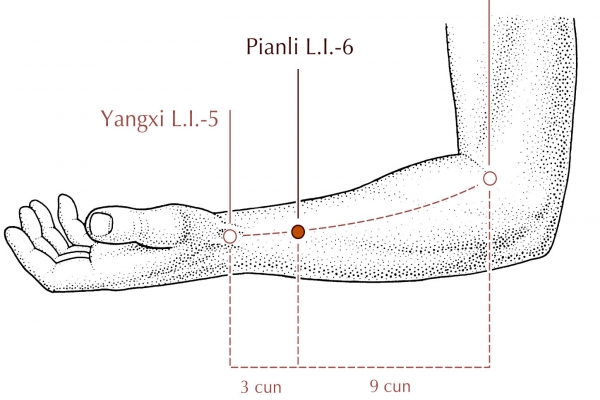
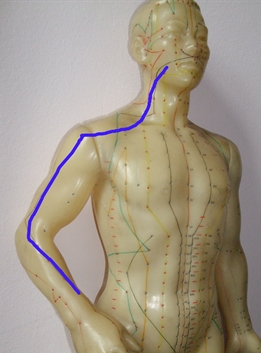
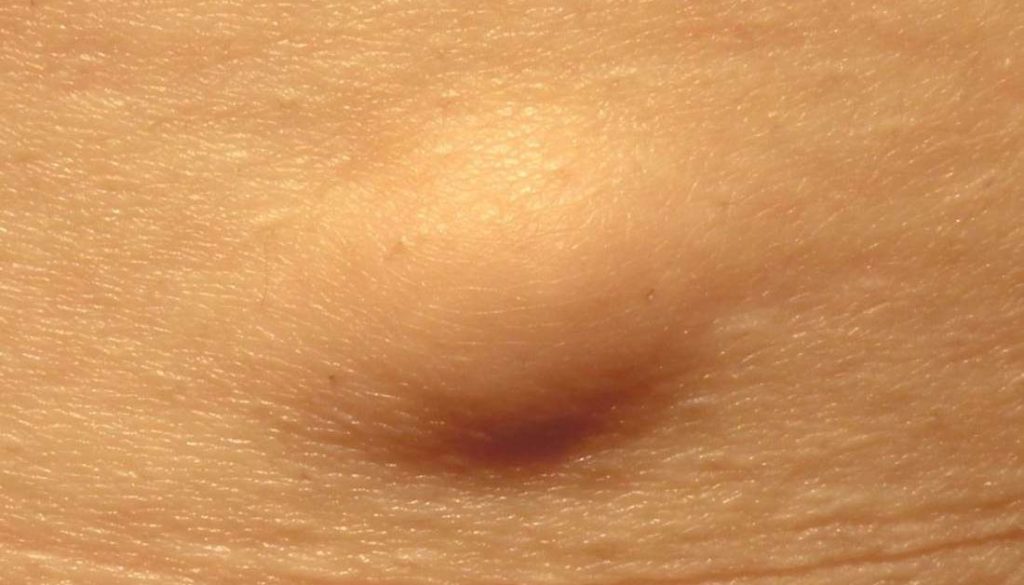


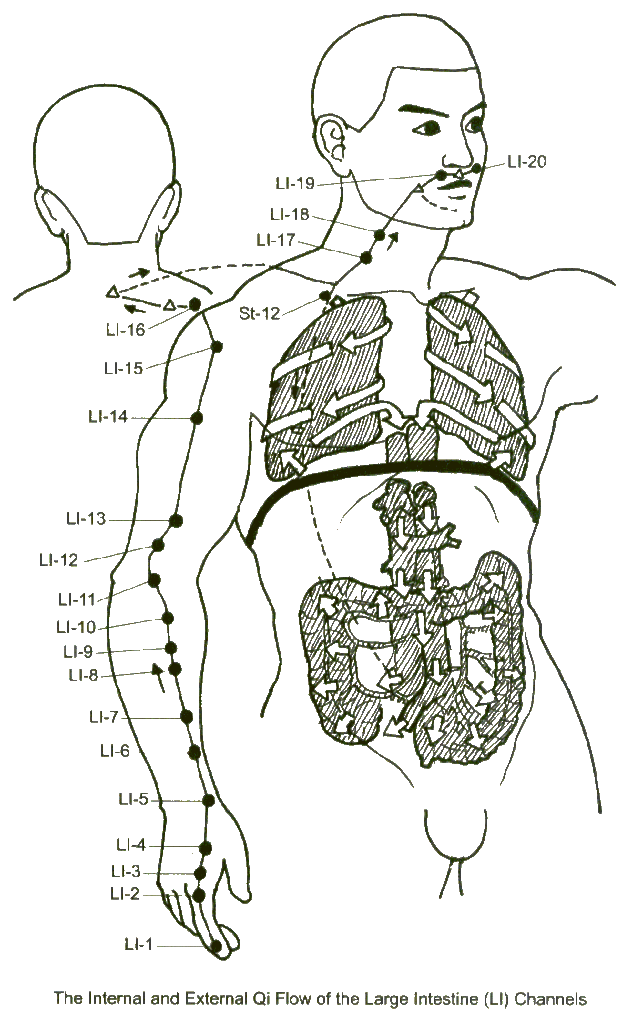
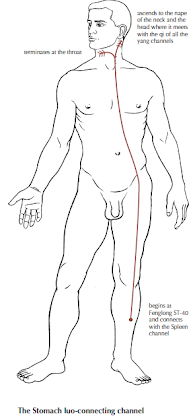
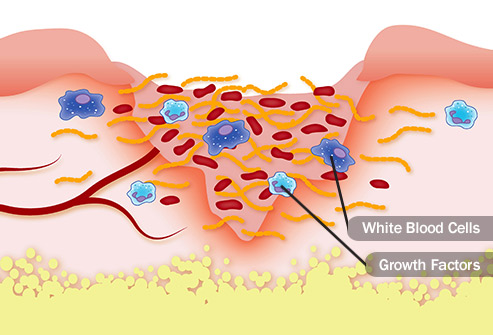

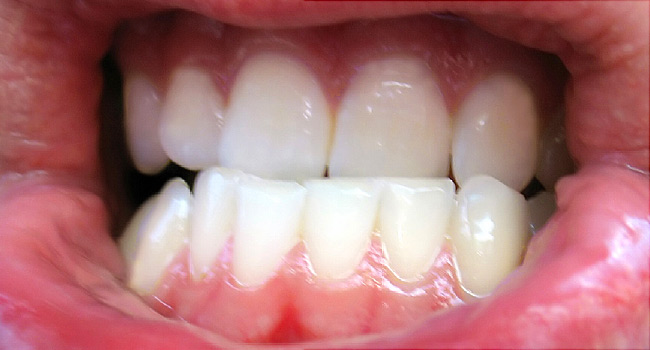

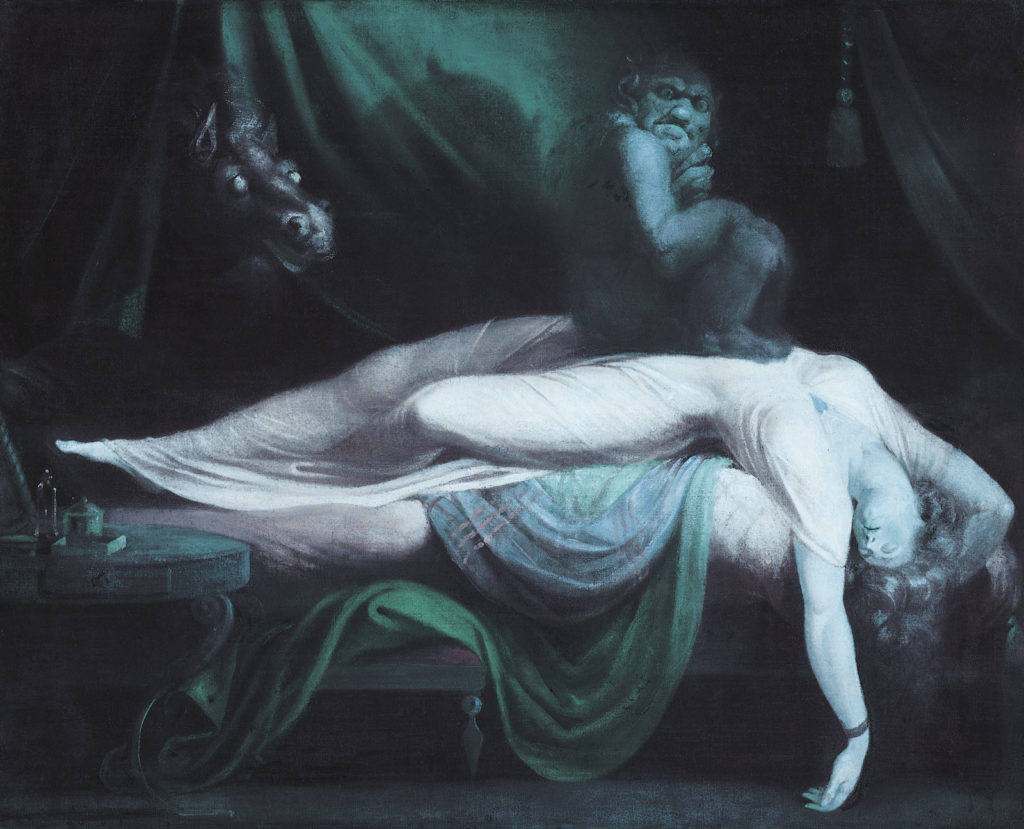




No Comments